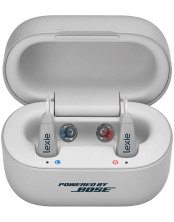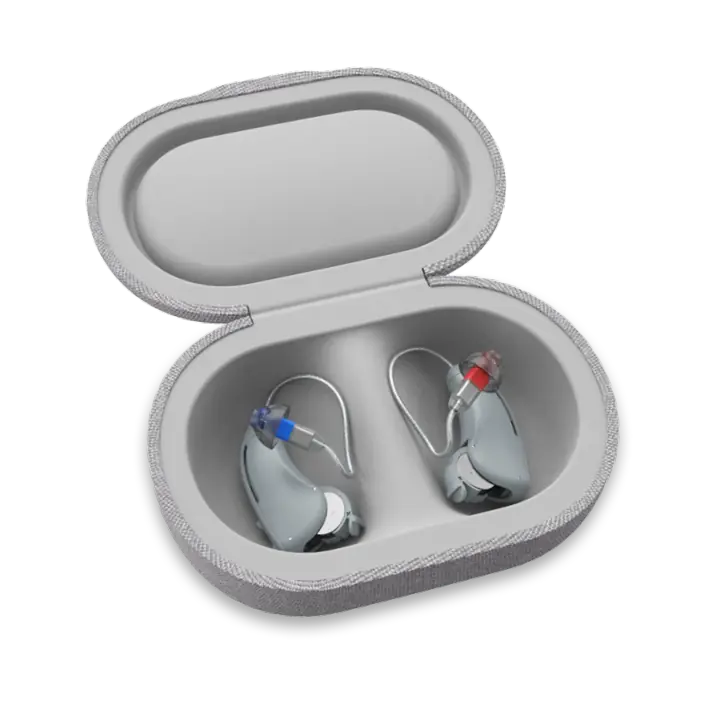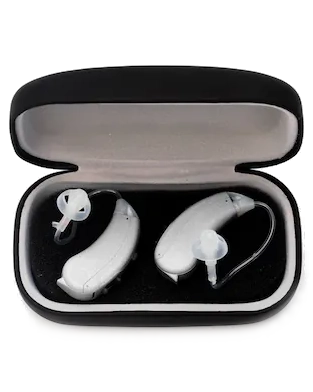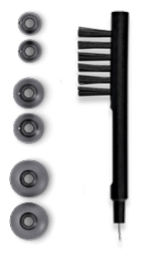Alerting Systems for the Hearing Impaired
Published: July 17, 2020
Updated: March 22, 2022
Alerting systems for the hearing impaired can be defined as devices that are used to assist people with a hearing loss to detect a warning or other environmental sounds. These sounds can have an impact on our safety and independence. These systems allow for increased communication for people with hearing loss while helping them be more self-reliant in their daily activities. The most important components of any hearing-impaired alert system are the warning signals that protect those with hearing loss from dangerous situations.
These alerting devices use a signal that may be visual (a flashing light), or auditory (an increase in amplification; or vibrotactile (a vibrating accessory)) to notify the person with hearing loss when something is happening. Auditory signals are sometimes used together with either visual or vibrotactile signals to stress the warning to the person. Alerting systems for hearing impaired people have evolved as technology has advanced. With the rise of comprehensive alerting systems, many people with hearing loss are now in a position to live independently or with very little assistance. We take a look at some examples of alerting systems below.
Alerting systems for the hearing impaired:
Alarm clocks
A standard alarm clock routinely works on the impact of sound; however, this can pose a challenge for persons with a hearing loss. Fortunately, there are specially designed alarm clocks for persons with hearing loss. These come in many forms and are available with adjustable volume and pitch, flashing light, or vibration. This includes those that have built-in strobe lights or bed-shakers and those that have an outlet where you can plug in a vibrating alert, or a lamp to wake the person each morning.
There are both electric-powered and battery-powered alarm clocks. Some alarm clocks are part of a complete alerting system (a central platform from which the alerts are operated which is usually wireless). The electrically powered clocks are generally known to be louder, have a stronger vibration, and may have a lamp plugged into them. However, battery-powered alarms can be more useful when traveling. In addition, there are small-timers available that use sound, flashing light, or vibration as an alert. These are good for cooking or as a medication reminder. Furthermore, the smartwatch has given rise to a platform that is multifunctional. There are several wrist watches (smart and conventional) available that use vibration as an alarm or visual cues as a reminder, or countdown timer.
Baby monitors
Specialized baby monitors have been developed for parents with hearing loss. The baby monitor alerts work on the same concept as the alarm clocks (visual, vibrotactile and/ or auditory). Parents may keep the monitor on their person or close to them where they can feel the vibrations when the monitor is activated. Nearby flashing lights may also alert them. Video monitors connected to smartphone apps allow for easy viewing.
Alerts for a ringing phone
The ability to hear a telephone ring will depend on a number of factors such as the severity of the hearing loss, the frequency of the telephone ring, and the distance from the telephone to the person. If the individual does not respond to the sound of the typical telephone ring, there are telephone ringers available that have adjustable volume, pitch, and ring patterns. Typically, a lower pitch ring can make it easier to hear. If the hearing loss is more severe, there are devices that will cause a light to flash, a body-worn unit to vibrate, or a bed-shaker to vibrate when sleeping. Most amplified telephones have options for volume, pitch, and pattern as well as a small flashing light to indicate the phone ringing.
Phone signalers have been developed to be used with conventional telephones that either plug directly into the outlet and phone line, or are attached to the side of a phone to pick up the sound directly. However, with the increase in smartphone usage globally, this has provided a new alternative to connecting with the world in multifunctional ways. Smartphones have the option of a vibration alert to notify the user of incoming calls and messages. Furthermore, in the case of hearing aids, smartphones have the ability to stream calls directly to the hearing aid, making it easier for the person to hear the person on the other end of the call. In addition, there are options such as video calls that offer the user visual cues in a telephonic conversation. The smartphone can also link up with other technological devices such as the smartwatch which can vibrate to alert the user on incoming calls or notifications.
Doorbell signalers
There are doorbell signalers that work with or without an existing doorbell to notify the person when someone is at the door. The doorbell is installed outside the door of the house or apartment and the receiver (bell) is plugged into an electrical outlet located inside the home. Additional receivers can be added as required. There are also security signalers available that cause an alert if a door or window is opened. Door signalers can range from a simple flashing strobe light to a system connected to your phone or one with its very own receiver.
In addition, some units can be made to operate with the type of intercom system often found in apartments. When the intercom buzzer is pushed at the main door of an apartment building, the sensor inside the apartment will “hear” the sound and send a signal to receivers. Generally, these types of doorbells are part of a complete alerting system and are usually wireless, making installation easy. Another type of device is one that is attached to the inside of the door and responds to knocking by flashing a light. This type of device is best used in a small apartment or hotel room.
Smoke and carbon monoxide detectors
The use of existing traditional smoke and carbon monoxide (CO) detectors can be made convenient by installing a sound detector. When the detector alarm goes off, it sends a signal to a receiver in order to signal a bed shaker, a flash or strobe light, or a lamp. Alternatively, one can make use of smoke and CO detectors that have been specially developed for persons with hearing loss. These detectors send a signal to a receiver in order to signal a bed shaker or flash strobe light. Some of these devices are sold separately while others are part of a combination fire and CO detection system. There are also alerting devices that are connected to technology to detect the pitch of an existing smoke detector and respond with a louder, lower-pitched sound to alert the person. In addition, there are devices available that shake the person awake while the digital display turns orange and says “FIRE.”
Weather alerts
Often, persons with hearing loss may be unaware of an impending storm or disastrous weather situation. Weather alerts are available that provide warnings about the weather. The weather alert can be used independently or with other alerting accessories, such as strobes or bed-shakers, depending on preferences and user preference.
Alerting devices can be useful as a communication tool and job accommodation to alert an employee who is deaf or hard of hearing to important sounds in the work environment. A visual or vibrating alerting device might be used to alert an employee to emergency signals like a fire alarm. The same type of device could be used to alert the employee to incoming telephone calls.
Other alert systems
There are many complete alerting systems available and it is important to understand how they operate. A transmitter detects certain sounds and then sends a signal to a receiver that produces one or more of the alerts (auditory, vibrotactile, or visual). It consists of a base unit that has its own outlets which can plug into a lamp/ bed shaker. The electrical outlet of this self-contained base unit would normally be dead but becomes charged (turned on) when the alarm condition occurs. When the base unit is triggered by either receiving a signal from a transmitter such as a doorbell, baby cry signaler, or the use of an alarm for waking, it will produce the required alert. On some systems, the lights can be adjusted to flash in different patterns so that the user can tell the difference between one condition and another.
The variety of alerting systems on the market provide the end-user with options to suit their preferences based on his/her individual need. When an auditory signal is used, it must amplify to a level that is audible specific to the hearing loss. In the case of a visual signal, it is necessary for the individual to have adequate sight and be able to see the light from the strategic areas of the home. In the use of a vibrotactile signal, a pager-type device can be body worn for best results. At the end of the day when choosing an alert system, it is important to consider that the signals used are tailored to provide the desired effect to the user.






